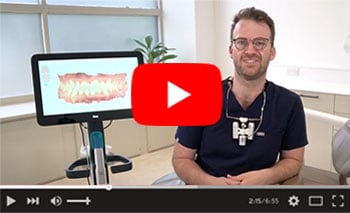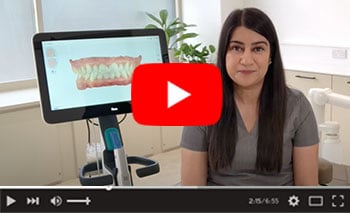Enquire about Invisalign
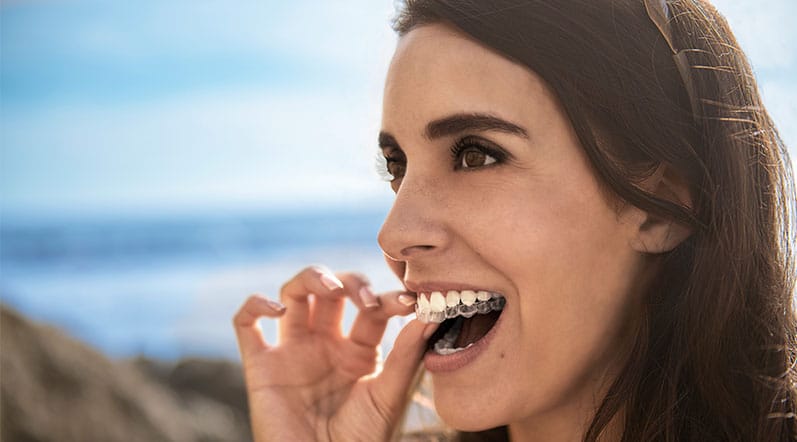
Invisalign: a clear alternative to braces
Invisalign has become a popular choice for people looking for a discreet alternative to traditional metal braces. The clear aligners are custom-designed to fit comfortably over your teeth, providing a smooth and snug fit.
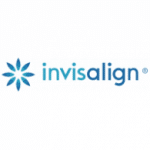
Unlike metal braces, which use visible brackets and wires, Invisalign aligners are clear and nearly invisible, making them much less noticeable in daily life. The aligners work by gently shifting your teeth into the desired position over time. This is done through a series of removable trays that you replace every few weeks as your teeth gradually move.
Invisalign has gained attention for its modern approach to orthodontics and universal appeal. It attracts people of all ages looking for a subtle way to straighten their teeth. It’s a versatile solution for a wide range of dental alignment problems, allowing patients to maintain their lifestyle while undergoing treatment. Thanks to advancements in technology, Invisalign is constantly improving. It offers better comfort and efficiency for those seeking a smoother, more convenient orthodontic experience.
Why choose Invisalign?
Invisalign is becoming a popular option for people who want orthodontic treatment that easily fits into their lives. With its clear design and advanced technology, it provides a modern way to straighten teeth without the discomfort or visibility of traditional braces. Here are some reasons why Invisalign is a great choice:
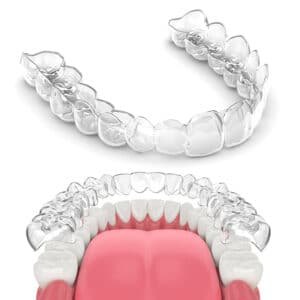
What your Invisalign plan includes
- Comprehensive dental health examination (including x-rays and photographs)
- Digital scan and smile simulation
- Comprehensive pre-treatment hygienist appointment
- 3 years’ worth of removable Vivera retainers
- Fixed retainers (if required)
- Teeth whitening
- All Invisalign appointments included
Subtle orthodontics for all ages!
Invisalign is a great orthodontic option for people of all ages, from teens to adults. Whether you’re looking to straighten your smile as a teenager or seeking a more discreet option as an adult, Invisalign offers a flexible solution that fits into any lifestyle.
The clear aligners are custom-made to gradually shift your teeth into place without the need for traditional metal braces. Removable for easy eating and cleaning, Invisalign allows you to continue with your daily activities while achieving a straighter smile. This treatment is ideal for anyone wanting a comfortable, subtle approach to orthodontics at any age.
The Invisalign process
The Invisalign process is designed to be convenient for patients while achieving the desired results.
- Initial Consultation:
The process begins with an initial consultation with your orthodontist. During this visit, the orthodontist will assess your teeth and discuss your goals. They will also take digital scans or impressions of your teeth for a more precise treatment plan. - Custom Aligners
Using advanced 3D imaging, your orthodontist will create a set of custom aligners that are designed to fit your teeth perfectly. These aligners are made from clear plastic and are virtually invisible.
- Wearing the aligners
You will wear each set of aligners for about 20-22 hours a day, only removing them when eating or brushing your teeth. Every 1-2 weeks, you’ll switch to a new set of aligners, which will gradually move your teeth into place. - Progress check-ups
Throughout the treatment, you will visit your orthodontist occasionally to ensure your teeth are moving as planned. Once your treatment is complete, you’ll have a beautifully aligned smile.
An Invisalign plan from Fulham Road Dental
At Fulham Road Dental, we provide a complete Invisalign plan designed to meet your unique needs. The process begins with a comprehensive dental health examination, which includes x-rays and photographs to assess your oral health and ensure the treatment is suitable for you.
Next, our team use advanced digital scanning technology to create a 3D model of your teeth, allowing us to simulate your new smile and plan the treatment. You will also receive a comprehensive pre-treatment hygienist appointment to ensure your teeth are in optimal condition before starting Invisalign.
Our plan includes three years’ worth of removable Vivera retainers to help maintain your smile after treatment. If necessary, we also offer fixed retainers to ensure long-term results. Additionally, teeth whitening is included to give you a brighter, more confident smile. All Invisalign appointments are included, ensuring seamless care and progress throughout your treatment journey.
Invisalign FAQs
Who is a good candidate for Invisalign?
Invisalign is suitable for many people, especially those with mild to moderate orthodontic concerns. It works well for both teens and adults looking for a discreet way to straighten their teeth. Ideal candidates typically have crooked, crowded, or slightly gapped teeth, as well as bite issues such as overbite, underbite, or crossbite.
Invisalign is perfect for those who are committed to wearing the aligners for 20-22 hours a day, as this ensures the best results. It’s also a great option for people who prefer a more subtle treatment over traditional braces. Your orthodontist will assess your specific needs to determine if Invisalign is the right choice for you.
How long does Invisalign treatment take?
The length of Invisalign treatment varies depending on the individual’s orthodontic needs. On average, treatment typically takes between 12 to 18 months. However, some people may complete their treatment in as little as six months, while others with more complex cases may require up to two years. Your orthodontist will provide a more accurate timeline based on your specific situation.
Factors that can affect the duration include the severity of your dental issues, how well you follow the treatment plan (wearing aligners for 20-22 hours a day), and regular check-ups with your orthodontist. After the main treatment, you may also need to wear retainers to maintain your new smile, which can be part of the overall timeline.
How do I clean my Invisalign aligners?
Cleaning your Invisalign aligners is straightforward and important for maintaining both your aligners and oral health. Rinse your aligners with lukewarm water every time you remove them to prevent the build-up of bacteria and plaque. For a more thorough clean, use a soft toothbrush and clear, mild liquid soap to gently brush your aligners. Avoid using toothpaste, as it can be abrasive and damage the aligners.
You can also use Invisalign cleaning crystals or specialised cleaning solutions designed for aligners. Never use hot water, as it can warp the plastic. It’s also essential to clean your teeth before reinserting your aligners to avoid trapping food particles and bacteria. Keeping your aligners clean helps maintain a fresh, comfortable fit throughout treatment.
Do Invisalign aligners hurt?
Invisalign aligners are generally more comfortable than traditional metal braces. However, you may experience some discomfort, especially when you first start wearing a new set of aligners. This is normal and occurs as the aligners gently shift your teeth into their new position. The pressure you feel should subside within a few days as your teeth adjust. Some people may also feel slight discomfort or tenderness when switching to a new set of aligners, but this is temporary.
If the aligners cause any irritation to your gums or the inside of your mouth, you can use orthodontic wax or a salt water rinse to soothe the area. Overall, the discomfort with Invisalign is typically mild and manageable compared to other orthodontic treatments.
Can Invisalign fix severe dental issues?
Invisalign is effective for treating many common orthodontic problems, such as crooked, crowded, and gapped teeth, as well as mild to moderate bite issues like overbite, underbite, and crossbite. However, for more severe dental issues, traditional braces may be a better option. Invisalign is designed to work for most patients with moderate alignment problems, but cases that require more complex movements of the teeth or jaw may need more extensive treatment.
Your orthodontist will assess your specific condition and determine if Invisalign is suitable for you. In some cases, a combination of Invisalign and other treatments, such as dental work or traditional braces, may be recommended to achieve the best results.
How long do I need to wear retainers after treatment?
After completing your Invisalign treatment, wearing retainers is essential to maintain your new smile. Initially, you will need to wear your retainers full-time for a few months to prevent your teeth from shifting back. After this period, your orthodontist may advise wearing them only at night.
Typically, you will need to wear your retainers for at least 12 months, but some patients may need to wear them longer, depending on their individual case. Your orthodontist will guide you on the exact duration based on your treatment progress. It’s important to wear your retainers as instructed to ensure long-term results and prevent your teeth from moving out of alignment over time.
Can I talk normally while wearing Invisalign?
Most people can talk normally while wearing Invisalign aligners. However, when you first start wearing them, you may experience a slight lisp or difficulty speaking clearly as your mouth adjusts to the aligners. This is completely normal and usually resolves within a few days as you get used to the fit.
Some people may notice slight changes in their speech during treatment, but these typically improve as you become more accustomed to wearing the aligners. To help with this, practice speaking out loud or reading aloud to speed up the adjustment process. Overall, Invisalign aligners are designed to be comfortable and discreet, allowing you to continue your daily activities, including speaking, with minimal disruption.
What happens if I lose or damage my aligners?
If you lose or damage your Invisalign aligners, it’s important to contact your orthodontist as soon as possible. Wearing a damaged aligner can delay your treatment and affect the progress of your teeth. In the meantime, if you can’t immediately get a replacement, your orthodontist may advise you to use the previous set of aligners until a new one arrives.
If you lose an aligner, avoid moving to the next set of aligners as it may cause your teeth to shift out of alignment. Your orthodontist will provide a replacement aligner, and they may adjust your treatment plan if necessary. To prevent damage or loss, always store your aligners safely in their case when not in use and avoid leaving them in places where they can be accidentally thrown away or damaged.
Can I play sports with Invisalign aligners in?
Yes, you can play sports while wearing Invisalign aligners, but it’s important to take precautions. Since the aligners are made of a smooth plastic, they’re less likely to cause injury compared to traditional braces. However, for added protection, especially in contact sports, your orthodontist may recommend wearing a sports mouthguard over your aligners to protect both your teeth and aligners.
Be sure to remove the aligners while eating or drinking during sports activities, as food can get trapped in them. After, clean both your teeth and aligners before putting them back in. As long as you follow these precautions, Invisalign should not interfere with your ability to play sports or engage in physical activities.
Will I need to visit my general dentist during Invisalign treatment?
Yes, you will still need to visit your general dentist for routine check-ups and dental care during your Invisalign treatment. These visits are important for maintaining your overall oral health, as your dentist will check for any issues like cavities, gum disease, or other concerns that may affect your treatment.
While your orthodontist manages your Invisalign treatment, your general dentist ensures your teeth and gums remain healthy throughout the process. It’s essential to maintain good oral hygiene during treatment, so regular dental cleanings and exams are recommended. Your dentist and orthodontist will work together to ensure your treatment progresses smoothly and that your overall dental health is preserved.
